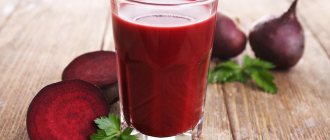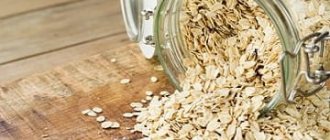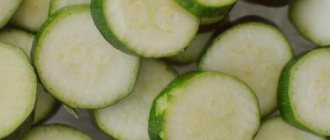According to modern recommendations, you should not rush into complementary feeding until the child reaches the age of 6 months. An exception may be babies who are bottle-fed. In this case, it is permissible to start complementary feeding from 4 months. Until this point, mother's milk or formula completely satisfies the baby's needs.
Start of vegetable feeding
Over time, the little one grows up, and the time comes to introduce him to new tastes. The main purpose of complementary feeding is to prepare the baby for solid food. This is a transitional stage from breastfeeding to the common table. Most often, parents choose vegetable puree for the first acquaintance with new food. Sometimes it is recommended to start complementary feeding with cereals if the child is not gaining weight well.
Despite the fact that the introduction of the first complementary foods does not aim to satisfy the baby’s hunger, additional food enriches the baby’s diet with useful substances, vitamins and microelements. At the age of six months, the baby may no longer have enough of them if he receives only one mother's milk. Vegetable puree for the first feeding will help fill this deficiency.
Selection of vegetables for puree
In terms of its composition, the puree can be mono- or polycomponent, that is, consisting of one or several products. The vegetables included in the puree recipe affect its usefulness, nutritional value, and effect on the baby’s body. This table will help you create a menu for your baby correctly.
| Vitamins, nutrients | Effect on the body | Possibility of an allergic reaction | Recommended age for starting complementary feeding | |
| Zucchini | Vitamins A, C, fiber, potassium, copper, low calorie content. | Strengthening effect on the cardiovascular system, improving digestion. | Hypoallergenic | From 4 months |
| Broccoli | Calcium, minerals, vitamin E (powerful antioxidant) | Improving digestion and appetite, developing and protecting vision, strengthening the immune system, bone growth. | Hypoallergenic | From 4 months |
| Cauliflower | Vitamins B, PP, C, E, K, potassium, phosphorus | Strengthens blood vessels, bone tissue, strengthens the immune system. | Low degree of allergenicity | From 4 months |
| White cabbage | Chlorine and sulfur compounds | antiseptic effect, cleansing the stomach and intestines in case of disorders | Rare cases of allergies | From 7 months |
| Pumpkin | Fiber, iron, carotene, mineral salts of phosphorus, potassium, B vitamins, vitamin K, pectin. | Normalization of stool, reducing the risk of anemia, strengthening the walls of blood vessels, stimulating physical and neuropsychic development, stimulating normal blood clotting, improving appetite and food absorption. | Low allergenic product | From 5 months |
| Carrot | Carotene (vitamin A), B vitamins, potassium salts, phytoncides. | Stimulation of growth, strengthening of bones, health of gums, teeth, hair, skin. | Possible allergies | From 4 months |
| Beet | Vitamins C, B, PP, iron, folic acid, | Stimulates the formation of red blood cells, improves the process of oxygen saturation of muscle tissue. | Frequent cases of allergies | From 8-9 months. |
| Potato | Phosphorus, potassium, starch, vitamins B, C, E, A. | Removing toxins from the body, strengthening the cardiovascular system | Low degree of allergenicity | From 4-4 ½ months. |
After introducing all vegetables into your baby’s diet, it will be good to alternate different types of purees so that the baby receives a variety of nutrients, vitamins and minerals.
Rules for introducing complementary foods
When to give:
- baby age – 4 – 6 months;
- manifestation of food interest;
- the baby is able to eat in an upright position;
- the child's well-being;
- complementary foods cannot be introduced 3 days before and 3 days after vaccination;
- a new product is given for the first time in a volume of no more than one teaspoon;
- every day the quantity increases to the required volume;
- a period of 5-7 days is allotted for the introduction of any product;
- Any unfamiliar dish should be tried in the first half of the day.
Before introducing new products, you need to consult a pediatrician about the age at which you can give your child a new dish. It is up to the observing specialist to decide when to give the first complementary foods. He will also recommend how to introduce complementary foods.
The ideal option for the first acquaintance is undoubtedly vegetable puree for infants. They contain a lot of useful substances necessary for an actively developing organism. The fiber contained in purees for infants will help improve the baby's bowel movements.
A young mother may well choose ready-made treats, which are available in abundance in children's stores. All that remains is to decide which jars from which company to choose. Any brand provides a very wide selection of finished products. Each mother determines her own rating of baby purees. Many parents do not trust ready-made baby food and prefer to prepare baby puree themselves.
How to introduce complementary foods correctly
You can start feeding purees from 4-6 months, but you need to do this gradually, half a spoon per feeding. During this period, the baby needs more calories, vitamins, and dietary fiber, which are no longer sufficient in breast milk. Vegetable purees are most suitable for starting complementary feeding - they are easier to digest and do not contain fructose, which can have a bad effect on the baby’s pancreas and kidneys. In addition, after trying sweets for the first time, the baby may refuse to try vegetable dishes, considering them not so tasty. All this must be taken into account before introducing your child to purees. You can find out more about the rules of complementary feeding in the Buyer's Guide to Fruit and Vegetable Purees.
How to prepare your own first course for your baby
Baby puree recipes are usually simple, and preparing dishes for infants is not difficult. To prepare a baby dish, you will need a device such as a blender. If your mother decides to cook at home, it is advisable to immediately purchase a high-quality, powerful device.
To prepare baby food, it is advisable to immediately opt for a multifunctional device. After studying the rating of the best brands, each family will choose a suitable device.
To prepare puree for the first feeding, it is preferable to choose seasonal vegetables. Ideal if they are fresh. In winter, it is convenient to use frozen fruits. Many parents freeze vegetables, cut into portions, in the fall, and feed their baby freshly prepared purees all winter.
Having decided with the pediatrician at what age she can start complementary feeding, the young mother is wondering which food is better: ready-made in jars or made with her own hands. If the choice is in favor of ready-made food, you have to study the rating of baby food, find out which manufacturing company is more reliable, which brands are of better quality. Therefore, more often, in an effort to give the baby the best, mother prefers to start complementary feeding with homemade dishes.
Mashed potatoes for complementary feeding should not contain anything unnecessary. Having prepared baby puree with her own hands, a young mother can be sure of the quality.
Vegetable puree for first feeding
Vegetable puree for the first feeding contains a significant amount of useful substances and saturates the cells with carbohydrates. The fiber included in its composition helps to activate the intestinal tract; due to pectins, the body is freed from waste substances. Vegetables also contain a complex of water-soluble vitamins, micro- and macroelements, and minerals. That is why the first complementary food, vegetable puree, is an indispensable food for the growth of the body of a six-month-old child.
Table of contents
|
Artificial infants should start feeding vegetable purees from 4-4.5 months, and infants - from 6 months, since until six months, mother's milk fully provides the child's body with nutrients, and after reaching six months, this nutrition is not enough, and the baby must receive additional elements from complementary foods .
Before six months, vegetable puree can be introduced into the diet of infants who are overweight or suffer from constipation.
Vegetables for first feeding
During the first feeding, the baby should be introduced to one type of puree.
It must be served as a separate dish, prepared from one vegetable, at 10 or 14 o'clock.
When preparing purees for the first feeding, it is forbidden to add sweeteners, dyes, salt, flour, or starch to it.
The following types of prepared purees are suitable for the first feeding:
- broccoli;
- from cauliflower;
- squash;
- from squash.
It is recommended to introduce cabbage and pumpkin purees a few weeks after the baby is introduced to squash and squash purees.
Only after a couple of months after getting used to the new food, it is allowed to gradually introduce multi-component purees into the diet, consisting of several vegetables.
Where to start feeding vegetables
The first complementary food should include hypoallergenic vegetables. Low allergenic activity is an average indicator.
Every baby's body is unique. In this regard, the child may be allergic to any unfamiliar vegetables.
It is recommended to strictly follow the rule of rationally introducing new foods into the baby’s diet, according to which he should be introduced to one vegetable throughout the week.
During this time, the child’s body adapts to the new product, and the mother will be able to monitor the baby’s health.
Despite the fact that broccoli is enriched in large quantities with ascorbic acid, cauliflower is much softer, more tender, with a pleasant taste, so children perceive it much better.
Zucchini puree is ideal for children with allergies. The vegetable helps remove excess fluid and has a light, pleasant taste.
Pumpkin puree is low in calories and high in pectin. It is ideal for children when correcting their weight.
To make the puree tender and tasty, you should use dense vegetables that contain little liquid.
When making vegetable purees at home, do not use sour cream, butter, or milk as a dressing, because... These products complicate the digestion process for babies during the first feeding.
Once in a child’s body, these products can cause disturbances in the gastrointestinal tract.
You should also refrain from adding vegetable oil to vegetable purees, as it leads to diarrhea.
It is better to wait until the baby reaches 9 months.
Useful tips for mothers: NUTRITION UP TO 3 YEARS OLD
Then they can safely flavor porridges, soups, and purees. In the meantime, when preparing purees, you can only use water and ripe, fresh, organic vegetables.
Which vegetable puree do you prefer?
Factory-made purees in jars have certain advantages over home-made purees.
Among the most significant advantages it is worth highlighting:
- homogeneous consistency;
- homogenization (fine grinding);
- a complex of vitamins necessary for a baby in accordance with his age.
Homemade purees are natural, do not contain additives, and can be easily combined with other dishes in the children's diet.
In addition, when preparing such purees at home, mom has complete control over the process of their preparation.
The downside of both factory-made and homemade vegetable purees is that they quickly spoil.
When introducing vegetable purees into the diet during the first complementary feeding, it is important to observe monocomponents.
Multicomponent vegetable purees cannot be offered to a baby due to the difficulty of digesting them and the lack of confirmation of a negative reaction to the products included in the puree.
Methods for preparing baby vegetable puree
There are several ways to make homemade puree:
• steamed followed by chopping (with this method of cooking vegetables, the entire complex of vitamins is retained in them, since the nutrients are not destroyed during cooking under the influence of high temperatures);
• boiled ground;
• baked crushed.
To prepare homemade vegetable puree, it is recommended to use environmentally friendly products grown in natural conditions without the use of chemicals.
To avoid microbes getting into the food, parents should thoroughly wash their hands, dishes, and sterilize baby nipples and feeding bottles.
Features of homemade purees for first feeding
You should initially feed your baby with one-ingredient vegetable purees. The purpose of the first vegetable complementary foods is to introduce the child to new foods.
The first vegetables that are recommended to be introduced into the diet should be pureed cauliflower, zucchini, and broccoli.
If fresh produce is hard to come by, opt for frozen vegetables. After the baby’s body begins to absorb these foods, you should gradually add pumpkin and squash to the menu.
The first daily portion of standard complementary foods is 0.5 teaspoon. Then it should be increased every day until the volume of consumption of the new product reaches 50 g.
Don’t be upset if your baby refuses the proposed type of puree for the first time.
This is the norm. It’s better to postpone getting to know this product for a week, replacing it with another vegetable, and then try again to offer the product you didn’t like before.
It is important not to stop feeding a new type of feeding until the baby gets used to it. In most cases, children begin to eat any puree after 12-15 tries.
At home, it is advisable to prepare puree by stewing in a small volume of water or steaming in a slow cooker, followed by grinding in a food processor and cooling to +37° C.
Vegetables should not be overcooked, as at high temperatures they lose vitamins.
To prepare puree at home, you can use not only fresh, but also frozen products. The main thing is that they do not contain chemicals. It is not advisable to stock up on vegetables from supermarkets.
The ideal option is to cook your own home-grown vegetables or those purchased at the market from a rural grandmother.
There is no need to add salt to the prepared purees. The taste buds of a child and an adult are different.
Children's preferences for the food they eat have not yet been formed, so unsalted foods are perceived as a delicacy, while for adults they seem disgusting.
At the initial stage of getting acquainted with adult food, it is important for the baby to get acquainted with the pure taste of the vegetable, without the addition of spices and preservatives.
If your plans include purchasing store-bought purees, you need to carefully study the offered assortment, composition, and shelf life. Ideally, the jar should not contain anything extra except water and vegetables.
Which manufacturer should you prefer?
The following brands of baby food are suitable for first feeding:
- Frutonyanya
- Grandma's basket
- Subject
- Gerber
- Hipp
- Nutricia
- Bellakt
The labels of factory jars contain information with age restrictions regarding complementary feeding, but it is somewhat different from that offered by pediatricians.
The final decision on the rationality of complementary feeding is made by the parents based on the recommendations of the pediatrician observing the baby.
According to specialized medical literature recommended by WHO for baby food, when choosing factory puree, you should pay attention to the following nuances.
Store-bought puree should have a uniform, creamy consistency and be enriched with vitamins. Also, it should not contain salt, additives, preservatives, spices, or acids.
Each of the vegetables included in the dish contains a unique complex of nutrients.
By receiving adequate nutrition, the baby gains weight and grows faster in accordance with his age.
Which puree to give preference is up to each mother to decide. The baby's taste preferences play an important role when choosing baby food.
Svetlana Ovechkina
TEACHER Higher pedagogical education. Director of the kindergarten.
Properties of vegetables
At the beginning of complementary feeding, the most hypoallergenic vegetables should be introduced. For most parents, the rating is deservedly topped by zucchini. It will be easiest for a breastfed baby to start getting acquainted with the first complementary foods. Zucchini puree has a delicate consistency and pleasant taste. Little gourmets eagerly accept a new dish.
Complementary foods are also prepared at home from cauliflower, pumpkin, and broccoli. It is not advisable to start with potatoes due to their high starch content. For a child's stomach such food will be too heavy.
- Zucchini. It has a rich vitamin and mineral composition, gently stimulates the functioning of the stomach and intestines. Does not irritate the baby's digestive tract. Delicate zucchini puree is ideal for first feeding
- Cauliflower. It contains a large amount of vitamins and microelements. Normalizes intestinal function and is easily digestible. Does not cause colic or bloating. Has a positive effect on kidney function and the process of hematopoiesis
- Broccoli. A storehouse of useful substances. Very rich in vitamin C, calcium and iron. Contains high quality proteins. Easily absorbed by the body
- Pumpkin. Huge health benefits. Speeds up metabolism, increases blood clotting and strengthens blood vessels. Pumpkin has 5 times more carotene than carrots.
There are a lot of tips on how to prepare puree - for infants it is cooked differently than for adults. It is advisable to use the freshest seasonal vegetables to prepare baby food. This approach will allow you to give the baby the best. In search of an answer to how to make puree at home, a young mother can easily find the necessary information.
So, let's figure out how to prepare a children's treat.
Fruit and vegetable baby purees
After the first feeding with single-component purees and, more importantly, in the absence of allergic reactions in the child to specific foods, you can try giving the baby purees consisting of several components. As a rule, such purees are more nutritious and children like them more. Multicomponent purees can be only vegetable or only fruit, or they can be mixed. Such dishes allow the baby to get the maximum of vitamins and nutrients contained in the products. The ideal option for complementary feeding with multi-component purees is green fruits and vegetables that do not cause allergies. That is why parents very often prepare fruit and vegetable puree from zucchini and apples.
Preparing baby puree from zucchini and apples
Zucchini is the least allergenic among vegetables and fruits. At the same time, it has a lot of minerals and fiber, it is rich in potassium, which ensures good heart function, and contains vitamins A and C. In addition, zucchini has a delicate consistency - this is an additional plus. The apple, in turn, is rich in vitamins A, B, B2, B6 and minerals: magnesium, iron, phosphorus, iodine - and this is not a complete list. Apple also provides natural protection for the body against viruses.
Wash apples and zucchini before making puree. Then peel them, remove the seeds and cut into small pieces. Zucchini and apples for puree need to be boiled separately, since each of them has different cooking times: apples in a pan are cooked for 20-25 minutes, zucchini - 15-20 minutes. It is preferable to steam the ingredients, this way you will retain more vitamins and save time. In a double boiler, apples need 15 minutes, zucchini - 10. After cooking, both components need to be rubbed through a sieve or chopped with a blender. Next, mix the mixtures and bring to a boil. The puree needs to be cooled to 30-40 degrees. By the way, this recipe is ideal for a child with allergies.
Zucchini puree
The rating of the very first dish is topped by zucchini puree. When choosing vegetables for your baby, it is advisable to choose small fruits. Such zucchini contains more useful substances than mature ones. To prepare you will need a blender. Such a device will allow you to achieve an absolutely homogeneous consistency.
How to do:
- To prepare, you need to take 1 zucchini, wash and peel. If the seeds are large, it is necessary to remove the core.
- Cut into cubes. Place the prepared zucchini in an enamel saucepan and add a small amount of water.
- Cook until soft, drain. Grind the finished vegetable in a blender, add a teaspoon of oil.
You can also steam the zucchini or microwave it.
Fruit purees
Fruit purees are also an important step for your baby towards nutritious food. As a rule, children eat fruit purees more readily: they are sweeter, more pleasant in taste and smell. Fruits are necessary for normal metabolism, growth and development of the baby. However, you should be careful when choosing them: some fruits, such as bananas, apricots, pomegranates, and berries, can cause allergic reactions in your baby. Remember that you cannot put sugar in baby purees for at least one year.
Fruit purees, like vegetable purees, should be introduced into the diet gradually, in small quantities, observing the child’s reaction. At the age of 4-6 months, one-component apple or pear purees are suitable for babies: these fruits are low-allergenic. Let's talk about one of the most popular fruit puree recipes - pear puree.
Preparing baby fruit puree from pear
Pear is easily digestible by the child's body and contains many useful elements. Firstly, these are vitamins A, C, E, K and group B (1,2, 3, 5, 6). Pears are also rich in fiber, plant proteins and important minerals: potassium, iron, magnesium, phosphorus and calcium. Pear puree can remove harmful substances from the body and facilitate digestion.
To make puree, choose pears with green skin (this will reduce the risk of an allergic reaction) and a uniform structure. If possible, use fruits grown in the region where you live: they are better absorbed by the baby’s not yet fully strengthened body.
First of all, thoroughly rinse the pears in running water, then carefully cut off the skin and remove the core and seeds. Next, simmer the pear in a small amount of water in a thick-bottomed bowl for about 15 minutes. After the pear is cooked, cool and grind it in a blender, or mash it with a fork along with the remaining cooking liquid. The puree can be served warm or cold. If your baby is already grown up, then you don’t need to boil the pear, but simply chop it in a blender. You can use the same principle to make applesauce.
Pumpkin puree
It has a very high rating among the healthiest vegetables. A good pumpkin has a rich, bright color. For cooking, it is advisable to choose ripe, soft fruits.
How to make puree:
- Wash and peel the pumpkin, cut into pieces.
- For puree, the vegetable can be baked in the oven, wrapped in foil. Or cook until soft in a saucepan.
- Take a chopping device and puree, adding the required amount of broth, water or breast milk.
- Add a spoonful of vegetable oil to the finished puree.
For children from 8 months
Pumpkin puree with turkey
Ingredients:
- 90 g pumpkin
- 30 g turkey
- quail egg
Preparation:
- Wash the pumpkin, peel and cut.
- Make minced turkey fillet and form small meatballs from it.
- Boil the quail egg over medium heat for 10 minutes and remove the yolk.
- Steam vegetables and meatballs for about 15 minutes.
- Combine the finished dish and the egg yolk in a blender bowl and puree until smooth, adding a little boiled water.
Oatmeal-wheat porridge with fruits
Ingredients:
- 2 tsp oatmeal
- 2 tsp wheat flakes
- 40 g apple
- 20 g cherries (can be frozen)
- 120 ml water
Preparation:
- Peel the apple and cut into cubes. Rinse the cherries and remove the pits.
- Pour water into a saucepan, add fruit and 2 types of cereal.
- Bring the dish to a boil and cook for 7 minutes.
- Add a little butter to the finished porridge if it is already in your baby’s diet.
- If necessary, you can beat the porridge in a blender.
Potatoes with turkey and vegetables
Ingredients:
- 30 g turkey
- 10 g onion
- 50 g potatoes
- 40 g Brussels sprouts
Preparation:
- Peel the potatoes, cut into small cubes and pre-soak for 10 hours.
- Finely chop the onion and Brussels sprouts.
- Boil the turkey over medium heat for 10 minutes, drain the first broth. Finely chop the meat.
- Place cabbage, meat, onions and potatoes in a saucepan, add water (to cover the vegetables) and cook over medium heat for 15 minutes.
- When the dish has cooled slightly, add a little vegetable oil.
Buckwheat with turkey
Ingredients:
- 30 g turkey
- 15 g carrots
- 4 tsp. buckwheat
- 10 g onion
- 140 ml water
Preparation:
- Peel the carrots and onions and chop finely.
- Cook the turkey meat over medium heat for 10 minutes, drain the first broth, and rinse the meat.
- Pour buckwheat into a saucepan, add carrots and onions, cover with water and cook for 15 minutes.
- Then add the meat and cook for another 10 minutes.
- If the baby is a little older and chews well, you can finely chop all the ingredients before cooking. If not, puree the dish.
Vegetable soup with beef
Ingredients:
- 30 g beef
- a third of a small carrot
- 5 florets of broccoli
- 3-4 tsp. small durum pasta
- 5 g onion
Preparation:
- Peel the carrots and chop finely. Break the broccoli into small florets.
- Pass the onion and meat through a meat grinder. Form meatballs from the resulting minced meat and cook them over medium heat for 15 minutes.
- Place carrots and broccoli in a saucepan, cover with water and cook for 10-15 minutes.
- Boil the pasta separately.
- Chop the vegetables from the broth, add pasta and meatballs to them. Puree the soup if necessary.
- You can add a little olive oil to the slightly cooled dish.
Pumpkin soup with beef
Ingredients:
- 30 g beef
- 50 g pumpkin
- 5 g onion
- 30 g potatoes
- quail egg
Preparation:
- Peel, cut and soak the potatoes in water for about 10 hours (can be left overnight).
- Peel the pumpkin and onion and chop finely.
- Cook the beef over medium heat for 15 minutes, drain the first broth and rinse the meat.
- Place vegetables and beef in a saucepan, bring to a boil and cook for another 15 minutes.
- Boil the quail egg (about 5 minutes) and remove the yolk.
- Mix the soup and yolk and beat in a blender until pureed.
Vegetable stew with rice
Ingredients:
- 30 g turkey
- 2 tbsp. l. rice cereal
- 1 small carrot
- a quarter of bell pepper
- 30 g corn
Preparation:
- Boil a piece of turkey for 15 minutes.
- Peel the bell pepper and carrots and chop finely.
- Place the meat and vegetables in a saucepan, cover with water and simmer for 10 minutes. Then add rice flakes, a little water and continue to simmer for another 5-7 minutes.
- The finished stew can be ground in a blender if the baby is still chewing poorly. Add a little olive oil to the cooled dish.
Broccoli and cauliflower puree
Puree from these types of cabbage is prepared in a similar way. After introducing each vegetable separately, you can make the mixture in any proportions. And also mix with other vegetables.
How to prepare baby purees:
Wash the cabbage and separate into florets. The bases of the inflorescences are quite hard and should not be used. If you use quick-frozen vegetables, cook without first defrosting according to the instructions. When cooking, also do not use excess water. Broccoli is ready faster than cauliflower. Grind the cooked vegetables, diluting them to an acceptable consistency.
First puree for babies
All mothers know what the first puree for a baby should be: non-allergenic and easily digestible. To achieve this goal, it is worth starting complementary feeding with vegetables. In addition, due to their neutral taste, they are better absorbed and contribute to normal intestinal motility. Everyone knows that it’s worth stocking up on zucchini and broccoli first. But, unfortunately, not everyone introduces complementary foods correctly, trying to feed the baby as large a portion as possible and immediately accustom him to a proper life. And this is the main mistake. Under no circumstances should you increase portions and experiment with vegetable mixes. The first puree for a baby should consist strictly of one vegetable. Administer no more than one teaspoon daily. Every day you should increase the portion by exactly one teaspoon. Vegetable purees are very useful for babies and over time, he will get used to them. Don't worry if your child refuses to eat. He will still eat vegetables in the right quantities. And even if a happy attempt to feed a child does not happen on the first day, it will still bring results.
If you want to start complementary feeding with fruits, then there is nothing unnatural about it. The only thing worth remembering is the difficulty of further introducing vegetables. After the sweet taste of mother's milk and fruits, it will be very difficult to “prove” the benefits of vegetables to your baby.











